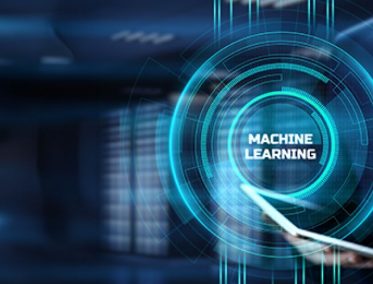What is Hyperautomation?
Hyperautomation is the application of advanced technologies like RPA, Artificial Intelligence, machine learning (ML), and Process Mining to augment workers and automate processes in ways that are significantly more impactful than traditional automation capabilities.
Hyperautomation looks at two things:
- An Expansion of Automation, where everything that can be automated, is automated.
- Going from RPA and task-oriented Automation to adding more sophisticated AI-based process automation (i.e., discover, analyze, design, automate, measure, monitor, reassess.) and building digital twins of an organization for digital ops.
In the quest for operational efficiency and business agility, automation has become a crucial strategy for enterprises worldwide. Robotic Process Automation (RPA) has been instrumental in automating repetitive tasks and achieving operational gains, but businesses are now looking beyond RPA for deeper transformation. This brings us to hyperautomation, a comprehensive approach that integrates multiple technologies to drive total business transformation.
Hyperautomation extends the capabilities of RPA by leveraging artificial intelligence (AI), machine learning (ML), and other advanced technologies to automate entire business processes. By integrating automation across the organization, hyperautomation allows enterprises to optimize workflows, improve decision-making, and create a cohesive digital ecosystem that enhances overall business performance.
RPA vs Hyperautomation: What’s the Difference?
Before diving into hyperautomation, it’s essential to understand how it differs from Robotic Process Automation (RPA). While RPA is a technology that focuses on automating specific rule-based, repetitive tasks, hyperautomation takes a broader and more integrated approach to automation.
1. Scope of Automation
- RPA: RPA is designed to automate repetitive, rule-based tasks, often those involving structured data. RPA bots mimic human actions, such as data entry, copy-pasting, or generating reports.
- Hyperautomation: Hyperautomation goes beyond task-level automation by incorporating technologies like AI, ML, natural language processing (NLP), and intelligent business process management suites (iBPMS). It aims to create an integrated environment where processes are not only automated but also adaptive, enabling continuous optimization.
2. Level of Intelligence
- RPA: RPA lacks cognitive abilities and is limited to executing predefined workflows. It can automate tasks based on explicit rules but cannot make decisions beyond those rules.
- Hyperautomation: By incorporating AI and ML, hyperautomation adds intelligence to automation. It can analyze data, identify patterns, make decisions, and adapt to new information, which makes it suitable for more complex processes that require a higher level of decision-making.
3. Technology Integration
- RPA: RPA typically functions as a standalone technology focused on individual tasks or small workflows.
- Hyperautomation: Hyperautomation integrates multiple technologies, including process mining, AI/ML, iBPMS, and low-code/no-code platforms, to provide end-to-end automation across the organization. This integration enables hyperautomation to handle complex, cross-functional processes that RPA alone cannot manage.
4. Business Impact
- RPA: The primary benefit of RPA is cost reduction and efficiency in executing repetitive tasks. It provides a rapid return on investment (ROI) by automating routine operations.
- Hyperautomation: Hyperautomation aims for total business transformation. It not only reduces operational costs but also enhances agility, decision-making, and customer experience by creating a connected, intelligent automation ecosystem.
The Building Blocks of Hyperautomation
Hyperautomation leverages an ecosystem of tools and technologies that work together to provide end-to-end automation. Let’s explore some of the core components that enable hyperautomation:
1. Robotic Process Automation (RPA)
RPA forms the foundation of hyperautomation by automating repetitive, rule-based tasks. RPA bots are capable of executing predefined workflows, allowing employees to focus on more value-added activities. However, RPA alone is limited to structured processes with minimal variability.
2. Artificial Intelligence and Machine Learning (AI/ML)
AI and ML enable hyperautomation to move beyond simple rule-based automation by incorporating cognitive abilities. Machine learning algorithms can analyze historical data, identify patterns, and make decisions, while AI capabilities like computer vision and NLP allow automation to interact with unstructured data sources. These technologies add an element of intelligence to automation, enabling processes to evolve and adapt.
3. Intelligent Business Process Management Suites (iBPMS)
iBPMS provide a framework for managing and orchestrating complex business processes. Unlike traditional BPM systems, iBPMS integrates AI and automation tools to create workflows that are dynamic and capable of responding to changing business needs in real-time. This is essential for enterprises looking to automate more complex, cross-functional processes.
4. Process Mining and Discovery
Process mining is a critical component of hyperautomation. By analyzing event logs and identifying how processes are actually carried out, businesses can discover inefficiencies and bottlenecks in their operations. Process mining tools provide valuable insights that help in optimizing workflows and identifying opportunities for automation.
5. Low-Code/No-Code Platforms
Low-code and no-code platforms play a significant role in hyperautomation by enabling business users to create and modify automated workflows without deep technical expertise. These platforms make automation accessible to a broader range of employees, speeding up implementation and reducing dependency on IT resources.
Benefits of Hyperautomation Over RPA
Hyperautomation offers numerous benefits that extend beyond the capabilities of traditional RPA, including:
1. End-to-End Process Automation
While RPA focuses on individual tasks, hyperautomation enables end-to-end automation. This holistic approach ensures that every aspect of a business process is streamlined, maximizing efficiency and reducing manual intervention.
2. Enhanced Decision-Making
By integrating AI and ML, hyperautomation supports data-driven decision-making. AI-powered analytics can generate insights from real-time data, enabling business leaders to make more informed decisions.
3. Improved Agility and Adaptability
Hyperautomation allows businesses to respond quickly to market changes and evolving customer needs. Automated workflows integrated with AI can dynamically adapt, ensuring that processes remain agile in a constantly changing environment.
4. Reduced Costs and Improved ROI
Hyperautomation results in greater cost savings by automating more complex and cross-functional processes, reducing manual errors, and optimizing resource allocation. This leads to an improved ROI compared to traditional RPA implementations.
5. Empowered Workforce
Hyperautomation enhances the workforce by freeing employees from repetitive tasks, enabling them to focus on innovation, strategy, and customer engagement. This not only improves job satisfaction but also allows businesses to leverage human creativity and expertise.
RPA vs Hyperautomation: Use Cases
The differences between RPA and hyperautomation are also evident in their applications across industries:
1. Finance and Accounting
- RPA: Automates repetitive tasks like invoice data entry and reconciliation.
- Hyperautomation: Uses AI to extract data from unstructured invoices, validate it, and automatically enter it into ERP systems, reducing errors and improving accuracy.
2. Supply Chain Management
- RPA: Automates order processing and inventory tracking.
- Hyperautomation: Integrates ML to predict demand fluctuations and optimize inventory management while automating logistics operations.
3. Customer Service
- RPA: Provides rule-based chatbots for handling basic customer inquiries.
- Hyperautomation: Integrates AI to provide a seamless customer experience with intelligent chatbots that handle complex queries and automation workflows for escalating issues to human agents.
4. Human Resources (HR)
- RPA: Automates routine HR tasks like employee onboarding documentation.
- Hyperautomation: Uses AI-driven tools for resume screening, employee training, and record management, enhancing the overall efficiency of HR processes.
Take Aways
RPA vs hyperautomation represents the evolution from task-level automation to comprehensive business transformation. While RPA has proven its value in automating repetitive, rule-based tasks, hyperautomation takes automation to the next level by integrating AI, ML, and other advanced technologies. This approach enables enterprises to achieve operational excellence, reduce costs, and improve agility.
However, to fully realize the benefits of hyperautomation, businesses need a well-planned strategy, a clear understanding of their processes, and effective collaboration across teams. Partnering with experienced providers can help organizations navigate the complexities of hyperautomation and unlock new levels of efficiency, innovation, and growth.
How we can help?
As businesses look to move beyond RPA and unlock the full potential of hyperautomation, partnering with an experienced provider can make all the difference. We are uniquely positioned to help organizations achieve successful hyperautomation adoption by providing the expertise and tools required for end-to-end transformation.
- Deep Expertise: With extensive experience in RPA, AI, and digital transformation, IT Convergence offers deep expertise in implementing hyperautomation solutions that deliver measurable business outcomes.
- Comprehensive Solutions: We provide comprehensive hyperautomation solutions, including process discovery, integration, implementation, and ongoing support, ensuring that our clients achieve their automation goals effectively.
- Tailored Approach: At IT Convergence, we understand that every business is different. We work closely with our clients to understand their specific needs and deliver solutions that align with their objectives, ensuring maximum ROI.
- Focus on Security: We prioritize data security and compliance, ensuring that your hyperautomation solutions meet the highest standards for protection and regulatory requirements.



